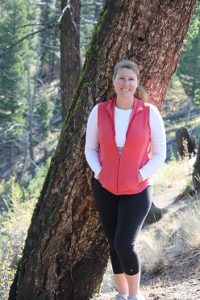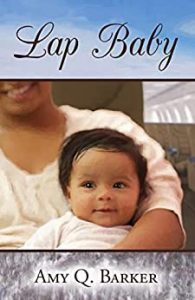On Writing: How to Make a Kernel Pop
How to Make a Kernel Pop
By Amy Q. Barker
 The other day I decided to make popcorn on the stovetop. Remember when we used to do this with Jiffy Pop? Well, I didn’t have one of those, but I did have a pan, vegetable oil, and popcorn kernels. I loaded the bottom of the pan with a layer of kernels and swirled them around in the oil and then turned the heat on medium high. I waited. And waited. A watched pot never boils. Or pops apparently.
The other day I decided to make popcorn on the stovetop. Remember when we used to do this with Jiffy Pop? Well, I didn’t have one of those, but I did have a pan, vegetable oil, and popcorn kernels. I loaded the bottom of the pan with a layer of kernels and swirled them around in the oil and then turned the heat on medium high. I waited. And waited. A watched pot never boils. Or pops apparently.
I shook the pan, peeking under the lid, watching the oil get hot and start to sizzle. Yet still no pop! Then, just as I had nearly given up, there it was—one of the tiny yellow dots burst into a white, puffy cloud. I nearly shouted for joy, shaking the pan even more vigorously until I couldn’t keep up with the number of pops, one after the other after the other, driving the lid off the top. Fast forward five minutes and I was happy as a clam, sitting in front of the TV, chowing down on super buttery, salty deliciousness that was oh so worth the wait!
Later I realized this is what writing is like. You start with a kernel, a tiny idea for a story, and maybe that kernel needs to marinate in the oil for a while before it becomes anything bigger. Maybe the kernel stays like that, saturated but unformed, untenable for days, weeks, months, even years. Maybe it grows and morphs into something else that is still not quite right. But maybe, just maybe, if you’re lucky, it becomes the beginning of a novel and that’s when you hear the pop! The epiphany that says I now know what to do with this kernel! I would venture when that happens, it’s just as exciting, exhilarating, and mouth-watering as the popcorn scenario above.
When I began writing, it was as if the floodgates had opened. I had ideas for stories popping into my mind every day. I carried notecards and post-its with me everywhere so I could keep track. I had this revelation that kernels can come from anything, anywhere, anybody. A TV show or movie, a friend’s odd comment, a random encounter at the grocery store or the post office, a flash of feeling during a conference call, a deep discussion with a neighbor. Literally anything! It was as if I was a vessel, and I couldn’t keep the kernels from dropping in, ruminating, and becoming a part of me.
But then the hard work began—how to turn these kernels into something more than just a “flash in the pan,” so to speak? The kernel for my first novel came to me after a visit to San Francisco where my husband and I saw a lounge singer pouring her heart out at a local restaurant on Nob Hill. This was the kernel which later became the story of a beautiful blind lounge singer who falls in love for the first time, my novel Rue. The next kernel came when I read my own grandmother’s diary from 1932—I took the impression of her words and created a mixed contemporary-historical novel about mothers and daughters, three generations coming of age in the same house, my second novel Punk.
Third, I wrote Bibliointuitive, a book that began as a retelling of my own personal tragedy of losing my best friend at the age of twelve and ended up as an unlikely love story between a bookish woman and the man who caused the tragedy in her life. Maplewood, my fourth novel, was written with the idea of a second chance at love and how to survive the loss of a spouse. Finally, my latest novel, Lap Baby, was inspired by a segment of a TV show that I watched over ten years ago about a flight attendant who survived a plane crash and went on to try to change the lap baby rules during emergencies.
What inspires you? What do you want to portray, feel, show in your stories? How can you make a kernel pop? Kernels are great, in and of themselves, but much like popcorn in its native form, they aren’t very exciting or digestible. You need to flesh them out. When I begin writing a new book, I start by simply typing free-form—I call it “pounding away like a deranged gerbil”—get your thoughts down, they don’t have to be complete, organized, or even coherent.
Think of a timeline, a setting, character names, major plot points, themes, the progression of the story. Anything you can think of in those first few days to marinate that kernel. Then, once you’ve let the kernel soak and season and simmer, begin again—for me, this becomes Chapter One. For others, this may be writing a complete synopsis or outline, or starting on Chapter Twenty. Whatever works for you—this is not a one-size-fits-all process.
One key thing I’ve learned is to think small in the beginning. Don’t bite off more than you can chew and don’t reveal too much in the story too soon. This can be difficult because of course you have momentum in the beginning, and you want to get to the “good stuff” as fast as you can, but that doesn’t mean the full crux of the story needs to be exposed right away. Writing is a marathon, not a sprint. Begin by drawing the reader in—how can you hint at what is to come without actually saying what is to come?
During this phase, the kernel is sizzling, but not popping. Then take the time to give your characters multiple dimensions—something the reader can hang their hat on—how did they get to this place, what makes them tick, what are the daily routines, personalities, acquaintances, lives? After that, add in more layers—interactions with other characters, deeper experiences, building tension, creating opportunities for growth. Finally, figure out how the story will unfold to allow for that growth—will someone fall flat before they can stand back up again? Will they make mistakes along the way? How will the journey build them up, tear them down, forge a bridge to another point of view? Much like your characters, you will be walking a new path—where will your writing lead you? Finding and savoring these nuggets is how the kernel pops and becomes palatable, inviting, delicious. I hope your writing will become something just as good!
So, I wish you luck in popping your kernel into your best version of popcorn, and into your best version of yourself.
—
Amy Q. Barker is a #1 Amazon best-selling author of women’s fiction as well as a nature lover. She writes books about extraordinary women who inconveniently fall in love during a major life crisis. Amy was raised in a small town in Western New York and now lives miles from anywhere on a lake in Indiana with her husband.
Connect with Amy:
LAP BABY
 The rules were exact. And absurd. Could they be changed?
The rules were exact. And absurd. Could they be changed?
Survivor #1: Paige Montgomery, a sweet, hopeful, small-town young woman just beginning to find her way in the world.
Survivor #2: Julie Geiger, a divorced flight attendant and a fierce fighter. Lately she is growing weary and needing to reinvent her mission—and herself.
Survivor #3: Marie Stanley, a homemaker, wife, and mother. She feels she’s been wronged and knows exactly who to blame.
Survivor #4: Terry Rhinegeist, a dad who decided it was better to walk away and forget about what happened.
Why do people’s lives cross in the most unpredictable ways? How do we reconcile our intermingled paths, especially when they are forged in blood? Will love and forgiveness find a way?
Category: How To and Tips























